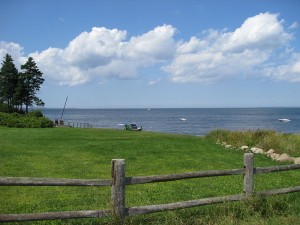Somewhere in Nova Scotia, Propensity Score Matching will happen
I looked on my calendar and there was a reminder that a month from now I will be in Nova Scotia. I try to get in my travel to anywhere north of Santa Barbara between May and October due to a near-fatal allergy to cold weather. I’m looking forward to this trip, for a few reasons. One is that I haven’t been to Nova Scotia in almost thirty years and it really is beautiful, when you can find it under the snow. A second is that I have family there I have similarly not seen in almost 30 years. They generally go down to the Caribbean in the winter to visit the smarter branch of the relatives who refused to move from tropical islands because, well, isn’t it obvious. Then, there is the whole propensity score matching thing, which is kind of cool and fun.
Propensity Score Matching
…. as will be explained by me, somewhere in Nova Scotia.
While random assignment to groups is just the thing to make a statistician’s heart beat faster, many statistical problems involve comparisons of groups that were different before the independent variable had any effect.
Think about some of these comparisons:
- Hospitals with special burn,cardiac or neonatal units versus general hospitals
- Public schools versus parochial, private or charter schools
- People who watch TV > 40 hours weekly versus those surfing the Internet > 40 hours
The challenge for the statistician is to control for all of the pre-existing differences between groups when testing the effect of the intervention.
Propensity score matching is an increasingly popular method of meeting this challenge. The concept of propensity scores is not that difficult. You have two groups- they can be any two groups but the key point is this – they were not randomly assigned and they are not equivalent. Three methods of propensity score matching with SAS will be discussed in this paper; quintiles, nearest neighbor and calipers. All three methods begin with PROC LOGISTIC to obtain a propensity score. Quintiles, the simplest method, sorts these into quintiles using PROC UNIVARIATE, and matches scores from the same quintile. The nearest neighbor and caliper methods both make use of SAS macros.
For even greater excitement, SAS code will be provided.
(I was told that if I provided the SAS code, the Nova Scotians would provide the beer.)
I have no further details at this time other than the promise of beer, SAS and propensity scores. That was enough to get me to book a flight to Nova Scotia. Seriously, there’s no need to get anal-retentive about it, I mean, what more do you want?

You asked – what more do you want? I want to know why you are going to Nova Scotia? I am guessing to present your paper on propensity score matching. Are you attending a SAS user group there (sorry for my foreign naivety)?
Keen to know more about your paper and your trip – please post photos too – looks like a great place!
I am going to Nova Scotia because there is a SAS user group meeting there and I am presenting a paper and because the man in this video is my grandfather http://www.whitepinepictures.com/seeds/iv/49/index.html
Although he, (and Emilia Maria, for who I was named) passed away years ago, there are still relatives in the area I have not seen in almost 30 years
I’ve been an reader of your blog for a long time now, so how funny that the Dalhousie Medical School where your grandfather attended is less than a five minute walk from my office!
Well, Kevin, we have to meet up then!
I think I will attend your session on July 5. It will go right over my head, but that’s okay.